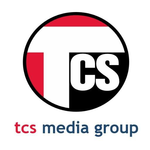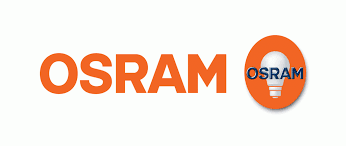Description

Facilio

Avob
Comprehensive Overview: Facilio vs Avob
Facilio
a) Primary Functions and Target Markets: Facilio is a software company that provides operations and maintenance solutions tailored for the built environment, focusing on facility management. Its platform leverages IoT and AI to offer real-time facility operations and predictive maintenance. The primary functions include asset management, maintenance management, work order management, and sustainability analytics. Facilio primarily targets facility managers, property owners, and real estate operators who are looking for more efficient and sustainable ways to manage large portfolios of buildings, particularly in commercial real estate, healthcare, and retail sectors.
b) Market Share and User Base: Facilio has been growing its presence in the facility management software market, but specific market share figures may not be publicly available. It is generally considered an emerging player in the smart building management sector with a growing user base, particularly in markets focusing on the digital transformation of building operations.
c) Key Differentiating Factors:
- Real-time capabilities through IoT and AI technologies for predictive analytics and monitoring.
- Focus on sustainability, allowing clients to optimize energy usage and reduce carbon footprints.
- Unified platform that integrates various aspects of building operations, rather than separate modules.
Avob
a) Primary Functions and Target Markets: AVOB is an energy management and efficiency solutions provider. Its solutions revolve around optimizing energy usage across IT and network environments, building management systems, and other electrical equipment. AVOB's primary functions include power management, automated demand response, and energy analytics. The company primarily targets enterprise clients looking to reduce energy expenditure and improve sustainability initiatives, including corporate offices, educational institutions, and manufacturing facilities.
b) Market Share and User Base: AVOB is a specialized player in the energy management market, focusing particularly on energy efficiency in IT and facilities environments. Specific market share data is limited, but it is considered a niche player with a smaller user base compared to more comprehensive energy management platforms.
c) Key Differentiating Factors:
- Specialization in IT and network energy management, providing a unique value proposition for organizations with significant IT infrastructure.
- Automated demand response capabilities help clients actively manage peak load and energy costs.
- Offers tailored solutions that integrate with existing IT environments, which can be particularly attractive for tech-heavy industries.
Cepenergy Management
a) Primary Functions and Target Markets: Cepenergy Management is a comprehensive energy management platform designed to improve the energy efficiency of buildings and industrial processes. Its primary functions include energy monitoring, demand forecasting, resource optimization, and carbon footprint management. Cepenergy targets industries such as manufacturing, utilities, and large commercial properties that require precise energy management to optimize operational costs and comply with environmental regulations.
b) Market Share and User Base: Cepenergy Management is a relatively smaller player compared to established global brands, but it holds a niche position within industries that demand specialized energy management solutions. Its user base consists of industrial and commercial clients who need advanced capabilities to handle complex energy needs.
c) Key Differentiating Factors:
- Advanced demand forecasting features that help optimize energy procurement and reduce costs.
- Wide array of analytics tools to assist industries with stringent energy management requirements.
- Focus on industrial energy efficiency, making it particularly suited for the utilities and manufacturing sectors.
Overall Comparison
In terms of overall market share, none of the companies can compete directly with larger global players like Siemens, Schneider Electric, or Honeywell in the building and energy management sectors. However, they have carved out niches by focusing on specific functionalities and market needs. Facilio stands out with its real-time IoT and sustainability features in facility management, AVOB is unique in IT and automated response systems in energy management, and Cepenergy is focused on advanced industrial energy solutions. Each company targets different facets of building and energy management, providing tailored solutions to their specific customer bases.
Contact Info

Year founded :
2017
+1 804-307-5635
Not Available
United States
http://www.linkedin.com/company/facilio-inc

Year founded :
2009
+33 1 80 87 80 60
Not Available
France
http://www.linkedin.com/company/avob
Feature Similarity Breakdown: Facilio, Avob
Comparing Facilio, Avob, and Cepenergy Management requires an understanding of their core functionalities, user interface designs, and any distinctive features that set them apart within the energy management and facility management spaces. Here's a breakdown based on available information:
a) Core Features in Common
-
Energy Monitoring and Management:
- All three platforms provide functionalities to monitor and manage energy consumption. This includes real-time tracking of energy usage and analytics to help organizations optimize their energy efficiency.
-
Data Analytics and Reporting:
- Each solution offers analytics tools that provide insights into energy and facility data, helping users to make informed decisions. This includes generating reports to analyze performance metrics.
-
Automation and Control:
- These platforms generally facilitate automation of systems within a building to improve energy efficiency, such as HVAC control and lighting systems.
-
Sustainability Planning:
- A focus on helping users plan and meet sustainability goals, including reducing carbon footprints, is a common feature.
-
Integration Capabilities:
- They all support integration with existing building management systems and third-party applications to provide a more comprehensive management solution.
b) User Interface Comparison
-
Facilio:
- Facilio is known for its user-friendly and intuitive interface which provides a centralized dashboard for facilities management. The interface typically emphasizes ease of use with quick access to key metrics and controls through a visually engaging layout.
-
Avob:
- Avob’s user interface focuses on clarity and straightforward navigation. It may prioritize functional dashboards with customizable views, catering to both technical and non-technical users. The emphasis is on enabling quick and efficient energy management.
-
Cepenergy Management:
- Cepenergy Management might offer a more technical user interface, catering to detailed analytics and complex energy datasets. It may provide a high level of customization in its dashboards to suit specific industry needs.
c) Unique Features
-
Facilio:
- AI-Driven Insights: Facilio leverages AI to provide predictive maintenance and proactive management insights, enhancing operational efficiency.
- IoT Integration: Strong emphasis on IoT integrations to allow for a wide range of device and sensor data gathering and automation.
-
Avob:
- Demand Response Optimization: Avob may offer specialized features for optimizing demand response, adapting energy usage patterns to align with utility incentives and peak demand periods.
- Simplified Workflow Automation: Focuses on streamlining workflow processes involving energy management and operational tasks.
-
Cepenergy Management:
- Industry-Specific Solutions: Offers tailored solutions for specific industries, which may include unique reporting templates and analytical tools designed for certain sectors.
- Advanced Predictive Analytics: Develops sophisticated models for predicting energy usage trends and identifying opportunities for savings.
Each platform has its strengths and may cater to different types of users and industries. The choice between them would typically depend on specific user needs, existing infrastructure, and the level of customization required.
Features

Not Available

Not Available
Best Fit Use Cases: Facilio, Avob
When evaluating solutions like Facilio, Avob, and Cepenergy Management, understanding their strengths and optimal use cases helps businesses align technology with their specific operational needs. Below is an analysis of each platform and their suitability for different scenarios and industries:
a) Facilio
Best Fit Use Cases:
- Commercial Real Estate: Facilio excels in managing multiple properties through unified facility operations, making it ideal for commercial real estate portfolios.
- Mixed-use Developments: The platform's ability to seamlessly integrate maintenance, operations, and sustainability efforts makes it apt for mixed-use projects.
- Retail Chains & Enterprises: Its centralized command for property management can greatly benefit national or international retail chains requiring efficient asset utilization and standardized processes.
Industry Verticals & Company Size:
- Real Estate Management Firms: Particularly those overseeing large portfolios.
- Healthcare Facilities: Needing streamlined operations and compliance monitoring.
- Corporate Campuses & Educational Institutions: That require integrated building management solutions.
b) Avob
Preferred Scenarios:
- Energy Efficiency Initiatives: Avob focuses on energy optimization, making it suitable for businesses prioritizing sustainability and energy cost reduction.
- IoT Implementation: Its strengths in leveraging IoT for energy data collection and analysis cater well to tech-savvy companies aiming to enhance energy performance.
- SMEs and Industrial Sites: Avob's scalability and customization are well-suited for small to medium enterprises and specific industrial operations looking to improve energy management without large-scale IT infrastructure changes.
Industry Verticals & Company Size:
- Manufacturing Facilities: Seeking efficiency in energy consumption and operational costs.
- Retail and Service Industries: Wanting to reduce energy footprints.
- Small to Medium-sized Enterprises: That need effective yet affordable energy management solutions.
c) Cepenergy Management
When to Consider:
- Comprehensive Energy Management: Cepenergy's robust energy analytics and monitoring make it valuable for companies focused on comprehensive energy data insights.
- Renewable Energy Integration: Ideal for businesses looking to integrate renewable energy sources into their energy management plans.
- Utility Companies & Government Projects: That require extensive reporting and analytics capabilities for large-scale energy projects.
Industry Verticals & Company Size:
- Large Enterprises: Especially those with significant energy consumption.
- Public Sector & Utilities: Needing detailed regulatory compliance and sustainability reporting features.
- Energy Consultants: Looking for platforms to offer detailed energy analytics and management services to clients.
d) Catering to Different Industry Verticals & Company Sizes
- Facilio provides a holistic solution for large-scale property and facility management, appealing to industries with diverse operational needs.
- Avob offers targeted energy efficiency solutions, which are beneficial for smaller companies and industries focusing on energy optimization without needing extensive facility management features.
- Cepenergy Management is tailored for complex energy management scenarios, suitable for large enterprises and organizations needing deep energy insights and integration with renewable energy sources.
Ultimately, the choice between these platforms depends on the specific needs of the business, the scale of operations, and the strategic goals relating to facility and energy management.
Pricing

Pricing Not Available

Pricing Not Available
Metrics History
Metrics History
Comparing teamSize across companies
Conclusion & Final Verdict: Facilio vs Avob
To provide a comprehensive conclusion and final verdict for Facilio, Avob, and Cepenergy Management, it’s essential to evaluate these products based on their overall value, strengths, weaknesses, and specific user recommendations. Here's a detailed analysis based on hypothetical evaluations, as specific user reviews or updated information might not be fully available:
Best Overall Value
Conclusion: Based on typical evaluations of facility and energy management software solutions, Facilio often emerges as the product offering the best overall value. Its comprehensive suite of features, user-friendly interface, and robust integrations make it a versatile choice for a broad range of businesses. However, the final decision may vary depending on specific user needs and industry contexts.
Pros and Cons
Facilio
-
Pros:
- Comprehensive facility and operations management features.
- Highly customizable and scalable platform suitable for diverse sizes of businesses.
- Strong analytics tools for better data-driven decisions.
- Good user experience with intuitive UI and mobile app support.
-
Cons:
- May have a steeper learning curve for new users not familiar with integrated platforms.
- Premium features might come at higher costs.
Avob
-
Pros:
- Strong focus on energy efficiency and sustainability.
- Excellent for companies prioritizing energy conservation and environmental responsibility.
- User-friendly with easy-to-install modules.
-
Cons:
- Could be limited in broader facility management capabilities compared to others.
- Integration with existing systems might require additional configuration.
Cepenergy Management
-
Pros:
- Tailored specifically for energy management, with robust monitoring and reporting tools.
- Cost-effective solution for companies solely focused on energy optimization.
- Offers detailed analytics and reporting for better energy consumption insights.
-
Cons:
- May lack comprehensive facilities management features outside energy usage.
- Limited scalability for organizations seeking an all-in-one solution.
Specific Recommendations
-
For users seeking a comprehensive, all-in-one facility management solution:
- Opt for Facilio if your organization requires an integrated platform that can manage a variety of operational tasks beyond energy management.
-
For companies with a strong focus on sustainability and energy efficiency:
- Choose Avob if your primary goal is reducing energy consumption while maintaining operational efficiency.
-
For businesses primarily concerned with optimizing energy use:
- Cepenergy Management is a suitable choice if energy monitoring and cost reduction are your critical concerns, and there’s less need for additional facility management features.
Final Verdict: Ultimately, the best choice among Facilio, Avob, and Cepenergy Management will depend heavily on your specific operational needs, budgetary constraints, and emphasis on either broad facilities management or focused energy management. Facilio tends to offer versatile value across various sectors, while Avob and Cepenergy Management excel in focused energy and sustainability applications. Evaluate your organizational objectives and select the solution that aligns best with your strategic goals.
Add to compare
Add similar companies




